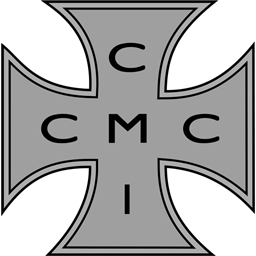Take a 5’ drum plant and put it into operation at 6500 feet elevation, feed it aggregate with 6% moisture and you will soon discover that your production rate is down around 40 tph. Add a couple of decades of wear and tear and the production rate can get as low as 20 tph. This is the situation I discovered at a southern Idaho plant last summer.
The AEDCO plant had been purchased new in the ‘70s by Smith Paving. It was set-up with a wet scrubber, a two bin cold feed and a bucket elevator feeding directly into a truck. Over the years the bucket elevator caused the company some problems so it was replaced with a belt conveyor.
Mike Shurtz, owner of ALmix in Fort Wayne Indiana, called and asked me to see if I could help Smith Paving get some production out of their facility. I contacted Edwin Smith in March and traveled to his plant in early April. It was snowing and cold in the high Rockies, but beautiful and exhilarating at the same time.
I talked with Mr. Smith, his son Bryant and his grandson Alan. Their goal was to increase the plant’s production, now at around 25 to 30 tons per hour, to somewhere near 80. Since the plant was producing less than 20,000 tons per year, I would be on a budget. What could I do?, they asked.
The plant exhibited several problems that contributed to the low production. The drum flighting was worn out, the burner safeties and main controls were inoperative, the main fan was undersize for the altitude and worn out and the wet scrubber was very inefficient. Additionally, the hot oil heater controls were archaic at best and the asphalt ratio system had died a long time ago. I told the Smiths that I felt we cold increase their production to the levels they wanted and I gave them an estimate which they accepted without hesitation. Due to the weather and their paving schedule I couldn’t start on the plant until late May.
A 5’ drum flows approximately 19,500 ACFM (actual cubic feet per minute) of air at 1,000 feet per minute velocity through the drum. By taking some readings and measurements I was able to determine that Smith’s drum was only flowing about 9,000 ACFM of air. There were two causes for the low air flow. First, was the altitude. At 6,500 feet the factory fan, rated at 20,000 ACFM when it was new, would only flow about 70% of its capacity. Second, our fan was worn out so it flowed considerably less than that.
Air is the single most important issue in any asphalt plant. The best plant on earth will fall flat when it runs out of combustion and drying air. The main fan on a contemporary asphalt plant supplies 60 to 70% of the air required by the burner. As that fan wears out it will move less and less air, taking away from the combustion process and slowly lowering the production capacity of your asphalt plant.
With these things in mind I contacted Mike Shurtz at ALmix and purchased a 28,000 ACFM main fan and motor. I also asked him to add an exhaust damper so that I could control the air through the drum. We installed the fan and built an oversize knock-out box to help with the increased fines carry-out I felt we would encounter. We also installed an automatic damper control to optimize air flow through our drum.
Another major concern was the burner safeties on the Hauck Jet burner, always an important issue but even more so at this plant since the burner was natural gas fired. Over the years, as system components had failed some had been completely eliminated, others just by-passed. The control panel had suffered a fire and as a result the burner was being positioned by hand, the air to fuel ratio being guessed at. Ignition of the burner was handled by a propane torch. My first thought was to overhaul the system, but as I looked around it quickly became apparent that the costs would be prohibitive. Instead, we installed a new Hauck SJO 200 Star Jet burner and new controls. We also converted to diesel since it is a safer fuel in this case.
The flights inside the drum were worn out. To optimize the fuel consumption we installed a set of high efficiency flights and converted the drum from a bottom discharge to a side discharge configuration. We also installed a set of heavy duty rakes at the discharge end of the drum.
We then moved the hot-mix belt to the side and built a 6,000# holding hopper on the end so that we could have a minute or two to get trucks in position on the scales. Prior to this installation, the plant operator would position the trucks tailgate to tailgate and back one under when the other one got loaded. This was a tedious way to load trucks and required a high level of coordination between all parties involved. Spills happened occasionally, requiring the plant to shut down for the cleanup process.
Once these improvements were made it was time to upgrade the asphalt ratio system. I had just finished upgrading another plant to computerized controls and, as a result, had a perfectly good set of Ramsey based ratio controls. I installed these along with a Ramsey 10-201 belt scale and integrator. We then installed frequency controlled variable speed drives on the feeders. Lastly, we overhauled the hot oil control system, updating it to automated controls. We spent a day calibrating everything, then made plans to pave the first job. Then it began to snow. Time passes slowly when you wait out a June snowstorm at 6,500 feet in the Rocky Mountains!
Finally, the big day arrived. At 7:00am, with trucks lined up, I lit the burner and started up at 50 tons per hour. After things warmed up I started increasing speed. At 100 tons per hour (6% moisture in the rock) I was at 40% burner and 50% on the damper. At 120 tons per hour I was at 60% burner and 70% on the damper. The job was finished before I had a chance to experiment any more.
The next day I was off to another plant for more mischief. The Smiths are consistently running their plant at 80-100 tons per hour; a 300 to 400% increase over what they could do prior to our modifications.
For additional information on this subject or help with any problems encountered contact Cliff Mansfield, Call 541-352-7942, 7:30am to 9:00pm Pacific Standard Time.
Email me- cmconsulting@hotmail.com

